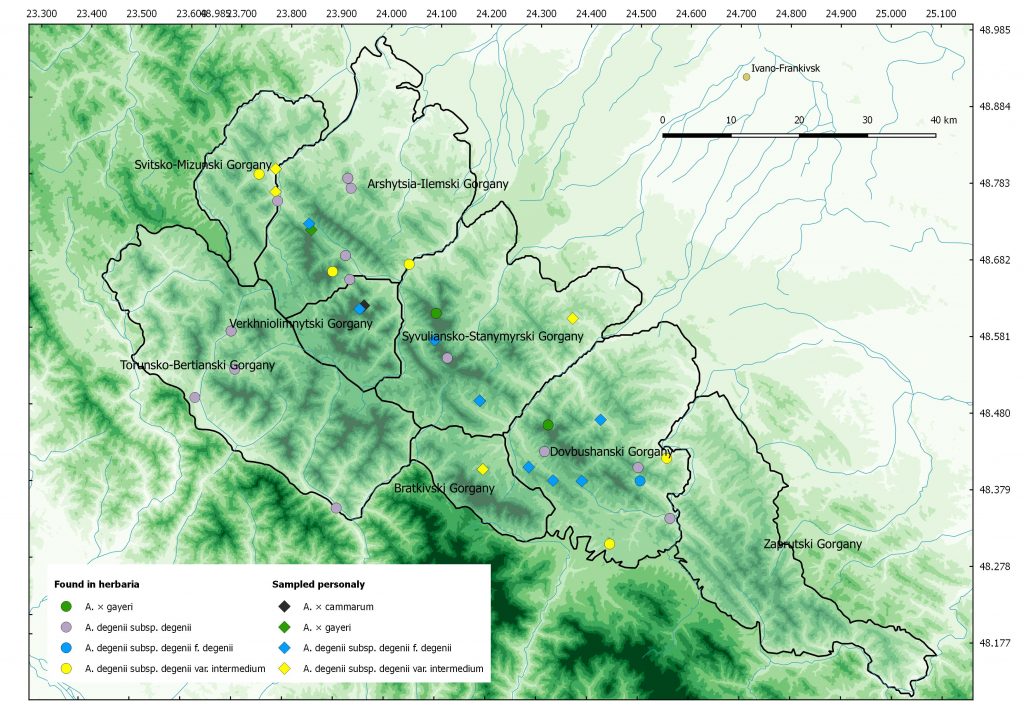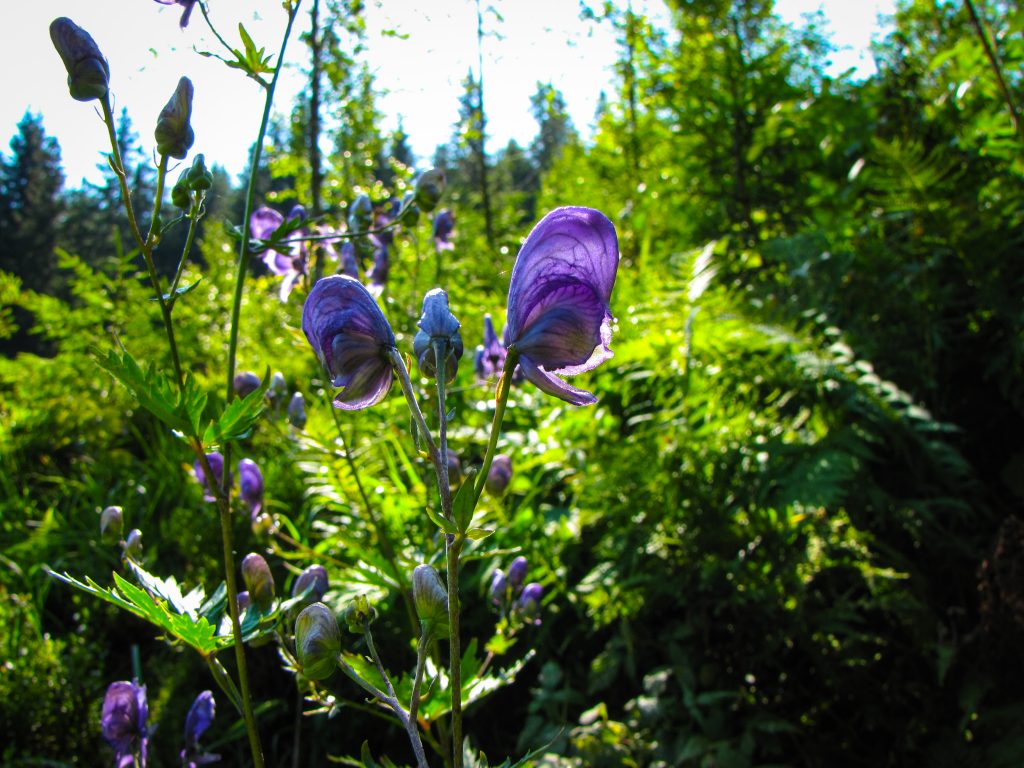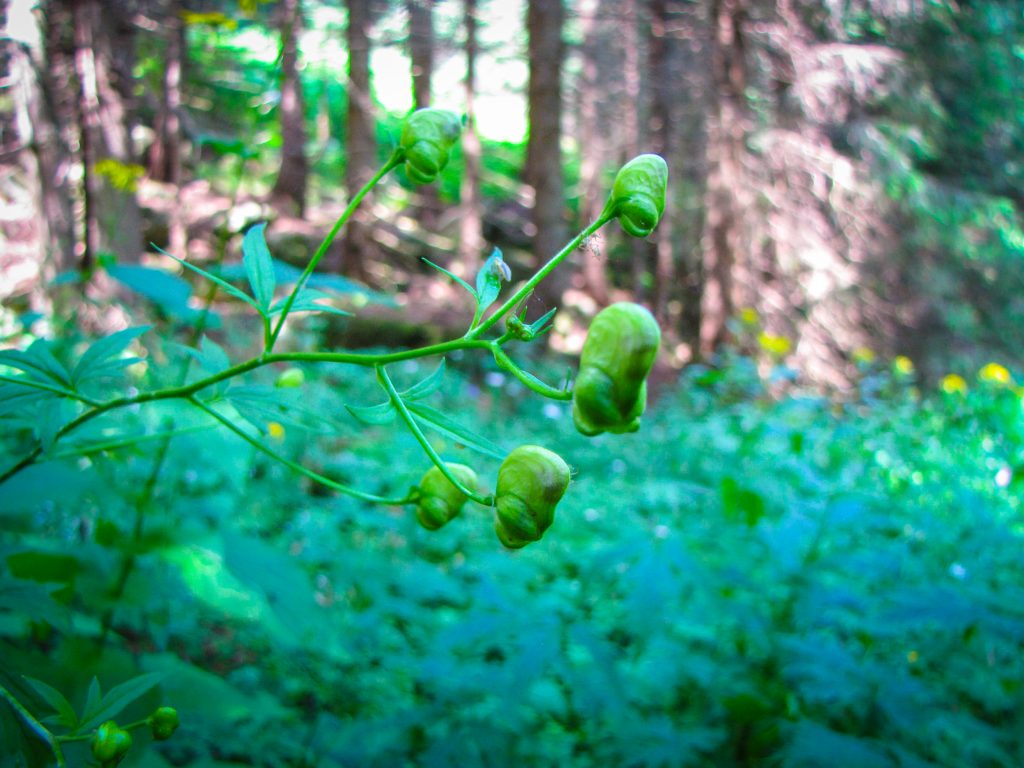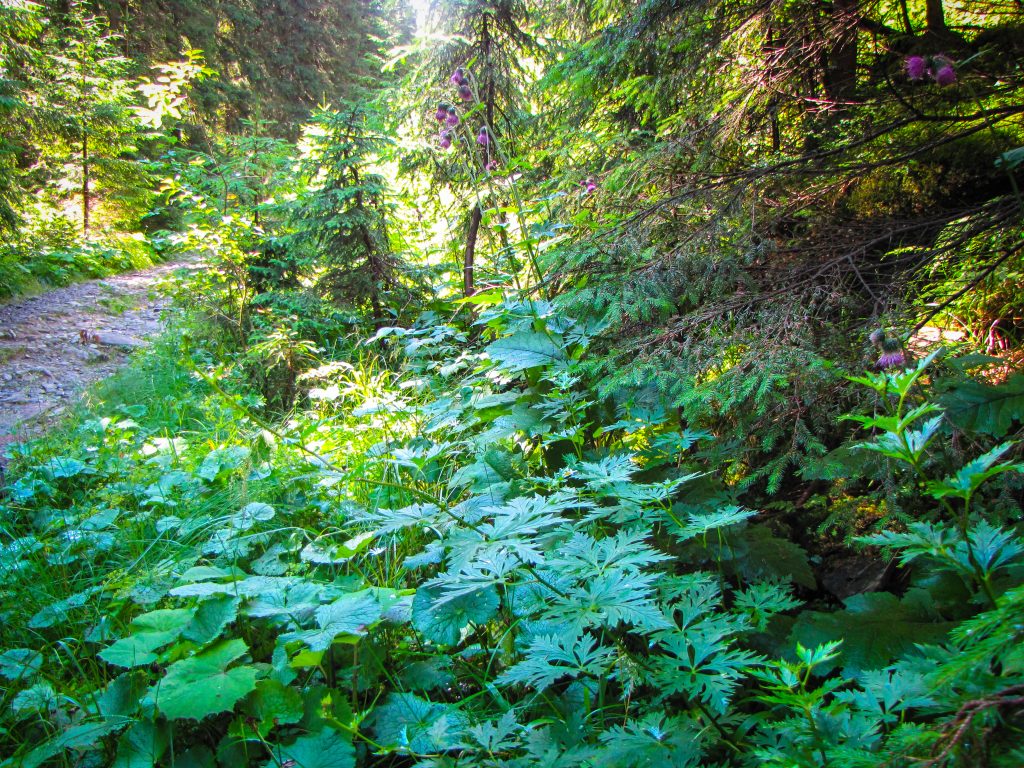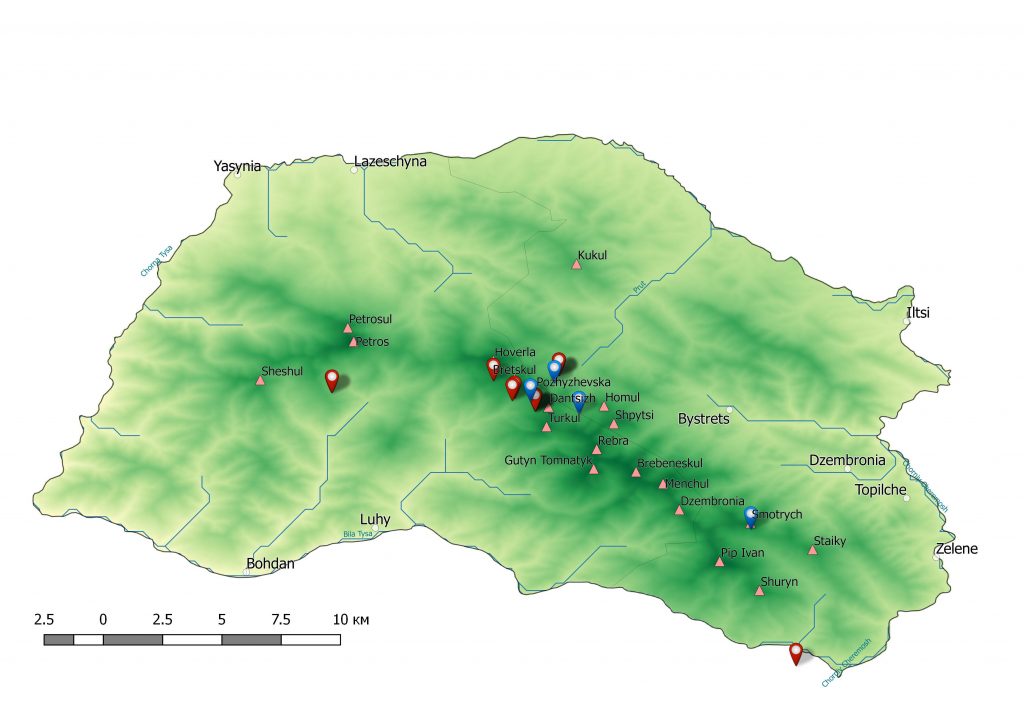Ecological preferences: Scio-heliophytes or helio-sciophytes; hygrophytes or hygromesophytes, rarely – mesophytes or sometimes hygro-helophytes; acidophils or subacidophils.
Distribution and habitats in Ukrainian Carpathians: Together with A. degenii it is one of the most usual monkshood in Ukrainian Carpathians, which is mostly distributed in submontane and lower montane belts of Chornohora, Chyvchyny, Gryniava, Eastern Beskids, Gorgany, Marmarosh, Svydovets, as well as Volcanic Carpathians and Polonynas. These plants similarly grow along the streams, near the lakes, in wet meadows, both in open and semi-shaded places. They are represented in the same communities as A. degenii.
Distribution and habitats in Chornogora: This species is represented in mixed populations with A. degenii and is very similar with it. Therefore it is not easy to clearly evaluate the total quantity, which is approximately about 1000 plants. For this research A. × gayeri was evaluated from 2 local populations in good condition. The most of the plants are in pregenerative and generative condition, while the general vitality of populations can be evaluated as normal. These plants are represented in Carici remotae - Fraxinetum, Alnetum incanae, Calthion, and Adenostylion communities on haplic fluvisols.
Distribution and habitats in Gorgany: There is just one confirmed during the field trips location of A. × gayeri in Gorgany. However there are also few more locations known from herbaria. Taking into consideration that this taxon is a hybrid and grows in mixed populations with A. degenii, I can assume that in fact there are much more appearance of it in Gorgany hidden by dominating cover of A. degenii. The condition of discovered population of A. × gayeri in Gorgany is good. It is represented by at least 50 mostly generative individuals spead on 500 m2. The association is Ranunculo platanifolii - Adenostyletum alliariae.
Threats: Similarly to A. degenii, probably it is LC taxon in Ukraine. Since it grows in mixed populations, it is very difficult to count exact number of plants. However, no doubts, there are much less plants of A. × gayeri in comparison to A. degenii, so probably the protection status of A. × gayeri will be reviewed. Among the possible threats are changes in hydrological conditions, water pollution by domestic waste, deforestations, and floods destroying the vegetation cover.
